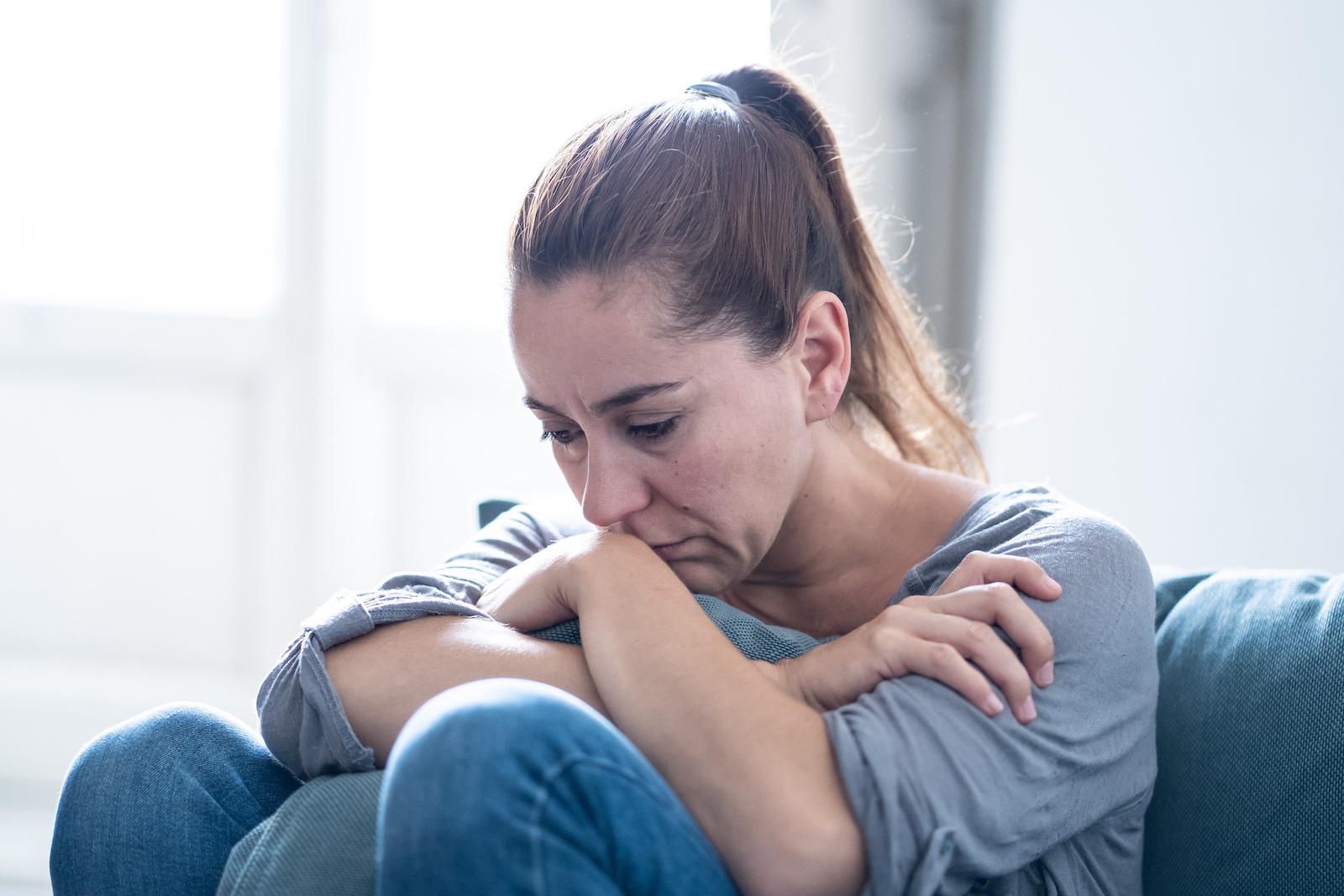Withdrawal | 5 min read
Klonopin Withdrawal: Symptoms, Timeline, and Treatment
Medically Reviewed By

On August 28, 2024
Written By
On January 11, 2022

What you will learn
- Klonopin is a benzodiazepine that’s prescribed for anxiety and seizures.
- Klonopin can cause dependence and addiction with prolonged use.
- If you stop Klonopin use suddenly, it can cause potentially dangerous withdrawal symptoms.
- Treatment for Klonopin withdrawal and addiction includes medical detox and substance use disorder treatment programs.
Klonopin, or clonazepam, is a benzodiazepine drug that’s used to treat anxiety disorders and seizures. Though generally safe when taken as prescribed for short periods, Klonopin has a high potential for dependence and addiction.
If you take Klonopin for extended periods, your body can become dependent on it. If you stop abruptly, potentially life-threatening withdrawal symptoms may occur. Learn more about Klonopin withdrawal symptoms, timeline, and treatment options.
What is Klonopin?
Klonopin is the brand name for clonazepam, an anxiolytic drug in the benzodiazepine class. It’s used to treat anxiety disorders, panic disorders, and seizures. It works by increasing the presence of the neurotransmitter gamma-aminobutyric acid (GABA), producing calm feelings.[1]
While Klonopin can calm the nervous system to relieve anxiety and stress, it also may be misused or abused for its relaxing effects and to get high. Doing so increases the risks of developing dependence and addiction.
Side Effects of Klonopin
Klonopin can have side effects that range from mild to severe, including:[2]
- Drowsiness
- Unsteadiness
- Dizziness
- Poor coordination
- Difficulty concentrating
- Poor memory
- Increased saliva
- Muscle or joint pain
- Frequent urination
- Blurred vision
- Changes in sex drive
Klonopin Withdrawal Symptoms
Klonopin can cause physical dependence with regular use. This means the body has become accustomed to the presence of the drug and can function normally. When you stop using it abruptly, severe withdrawal symptoms can occur, some of which may be life-threatening.
The symptoms of Klonopin withdrawal may include:[3]
- Headaches
- Nausea
- Tremors
- Stomach pain
- Hallucinations
- Fatigue
- Dizziness
- Confusion
- Anxiety
- Depression
- Seizures
- Thoughts of suicide
Acute withdrawal symptoms usually peak about two weeks after stopping clonazepam use, but some symptoms may linger for more extended periods.
Klonopin withdrawal can have potentially fatal complications. It’s crucial to monitor during the withdrawal period, including blood pressure, respiration levels, heart rate, and body temperature, all of which can spike to dangerous levels as the body readjusts to the absence of Klonopin.
Benzodiazepine withdrawal can also have severe psychological effects that may increase the risk of suicidal thoughts and actions, such as drastic mood swings, inability to feel pleasure, panic, anxiety, nightmares, depression, and anger.
Klonopin Rebound Symptoms
Rebound symptoms can occur during the early stages of withdrawal. These include the return of symptoms that Klonopin was initially prescribed to treat, such as anxiety, panic, or insomnia. It can be challenging to determine what symptoms are from withdrawal and what is the recurrence of the original condition.
Klonopin Withdrawal Timeline
Withdrawal symptoms from Klonopin, due to its long half-life of approximately 30-40 hours, can sometimes take a few days to start after the last dose.[4]
| Time Since Last Dose | Symptoms |
| 1-3 days | First signs of withdrawal: Mild anxiety, mood changes, sleep problems |
| 7-14 days | Symptoms peak: Anxiety, irritability, tremors, hallucinations, seizures |
| 3-4 weeks | Symptoms subside: Anxiety and milder symptoms |
| 2+ months | Post-acute withdrawal symptoms (PAWS) may occur: Mood swings, trouble sleeping, and drug cravings |
In the first 1 to 3 days, withdrawal symptoms like mild anxiety, mood changes, and difficulty sleeping begin.[5] These early symptoms may be subtle and can be mistaken for stress or the return of previous symptoms.
In the next week or two, symptoms reach their peak. This can be a dangerous time with symptoms like hallucinations, tremors, irritability, intense anxiety, and in rare cases, seizures.[6] Medical supervision during this period is highly recommended.
Over the next 3 to 4 weeks, most physical symptoms are expected to subside. Psychological symptoms like anxiety can persist for longer, but they’re generally less intense, and sleep patterns often improve.[7]
Protracted withdrawal, also known as post-acute withdrawal syndrome (PAWS), can occur in the following weeks or months. PAWS includes psychological symptoms like mood swings, insomnia, low energy, and cravings that persist after stopping Klonopin.[8]
Factors That Affect Klonopin Withdrawal
Several factors influence the symptoms and length of withdrawal with Klonopin:
- Age: Older people may have more intense withdrawal symptoms.
- Dosage: The more Klonopin you take, the more dependent you may become on the drug.
- Length of time: The longer you take Klonopin, the more dependent the brain may become.
- Abuse of other substances: If you’re abusing other substances with Klonopin, you can experience more serious side effects and more complex and intense withdrawal.
- Co-occurring mental health disorders: Medical and mental health issues may worsen during withdrawal, particularly with anxiety or depression.
- Genetics: If you have a family history of addiction, you may experience more intense withdrawal symptoms.
- Environmental factors: A non-supportive environment or high stress may affect recovery and how well you manage your withdrawal symptoms.
Can You Quit Klonopin at Home?
Because of the risks of seizures, suicidal ideation, and protracted symptoms, withdrawal from Klonopin should never be attempted without medical supervision. It’s important to taper the dose carefully under the supervision of a doctor or as part of a medical detox program that can monitor your health while you go through withdrawal.
Is Klonopin Safe for Long-Term Use?
While Klonopin is generally safe for short-term therapeutic use, it’s not recommended for extended periods due to risks of dependence and cognitive impairment. Long-term use can alter brain function, and it can take months or years to recover after you stop.[9]
Klonopin Detox for Withdrawal
Withdrawal from a benzodiazepine like Klonopin can have life-threatening complications. It’s crucial to taper off Klonopin under the guidance of a doctor to reduce the risk of severe withdrawal symptoms.
Medical detox may be recommended in cases of Klonopin misuse and abuse, which may increase the severity of withdrawal symptoms and potential complications. This safe, medically supervised setting gives you medical support and monitoring while the drug clears your system, ensuring that you’re as safe and comfortable as possible.
Some medications can be used to help with benzodiazepine withdrawal, including:
- Selective serotonin reuptake inhibitors like Prozac
- Anticonvulsant medications like carbamazepine are used to control seizures
- Natural sleep aids, like melatonin, can help with insomnia
Treatment for Klonopin Withdrawal
If you have an addiction to Klonopin, detox is just the first step. Detox helps with the withdrawal period, but there’s more to addiction than physical dependence. Entering an addiction treatment program is crucial to address the social, emotional, and psychological aspects of addiction.
Addiction treatment may take place in an inpatient or outpatient setting with a combination of individual and group counseling, behavioral therapies, and other modalities tailored to your unique needs and history. This is an important part of any addiction program, but it may be more critical with Klonopin and the protracted withdrawal syndrome that can cause intense psychological symptoms.
Get Help for Klonopin Withdrawal
Klonopin can be safe when used as directed, but there’s a risk of dependence and abuse. If you’re struggling with Klonopin addiction, you shouldn’t try to quit on your own. Doing so can cause potentially life-threatening complications and prolonged withdrawal. Seek help with an addiction treatment program that addresses both the physical and mental symptoms of substance abuse.
Frequently Asked Questions About Klonopin Withdrawal
The symptoms of benzodiazepine withdrawal can vary based on several factors, but the most common symptoms are sleep disturbances and heightened anxiety.
If you feel that Klonopin is no longer working as it should, don’t increase your dose alone. Discuss your concerns with your doctor. You may need a higher dose, more frequent medication, or a different medication.
If you stop taking benzodiazepines, it can take some time for your body and brain to return to “normal.” The longer you take benzos, the longer it may take before you feel normal again. After long-term benzodiazepine use, it can take up to 6 months for cognitive function to improve. Cognitive deficits can sometimes be permanent or take years to return to normal.[10]
Benzo belly refers to gastrointestinal issues that may arise as a side effect of benzodiazepine medications. The drug affects normal digestive processes, resulting in multiple digestive symptoms.
Ascendant New York Editorial Guidelines
Here at Ascendant New York, we understand the importance of having access to accurate medical information you can trust, especially when you or a loved one is suffering from addiction. Find out more on our policy.
[1] MediLexicon International. (n.d.-b). Klonopin: Dosage, side effects, how it works, and more. Medical News Today. https://www.medicalnewstoday.com/articles/drugs-klonopin#fa-qs
[2] U.S. National Library of Medicine. (n.d.-a). Clonazepam: MedlinePlus Drug Information. MedlinePlus. https://medlineplus.gov/druginfo/meds/a682279.html
[3] MediLexicon International. (n.d.-b). Klonopin: Dosage, side effects, how it works, and more. Medical News Today. https://www.medicalnewstoday.com/articles/drugs-klonopin#withdrawal-and-dependence
[4] Basit, H. (2023, May 13). Clonazepam. StatPearls [Internet]. https://www.ncbi.nlm.nih.gov/books/NBK556010/
[5,6,7,8] Clonazepam as agonist substitution treatment for benzodiazepine dependence: A case report – maremmani – 2013 – Case Reports in Psychiatry – Wiley Online Library. (n.d.-a). https://onlinelibrary.wiley.com/doi/10.1155/2013/367594
[9][1]0 Ritvo, A. D., Foster, D. E., Huff, C., Finlayson, A. J. R., Silvernail, B., & Martin, P. R. (2023, June 29). Long-term consequences of benzodiazepine-induced neurological dysfunction: A survey. PloS one. https://www.ncbi.nlm.nih.gov/pmc/articles/PMC10309976/





